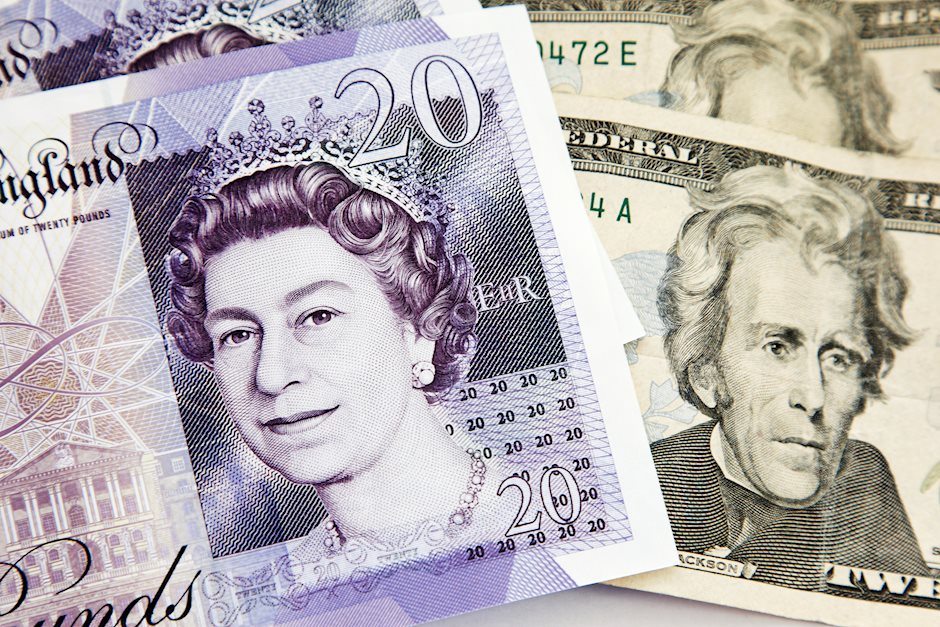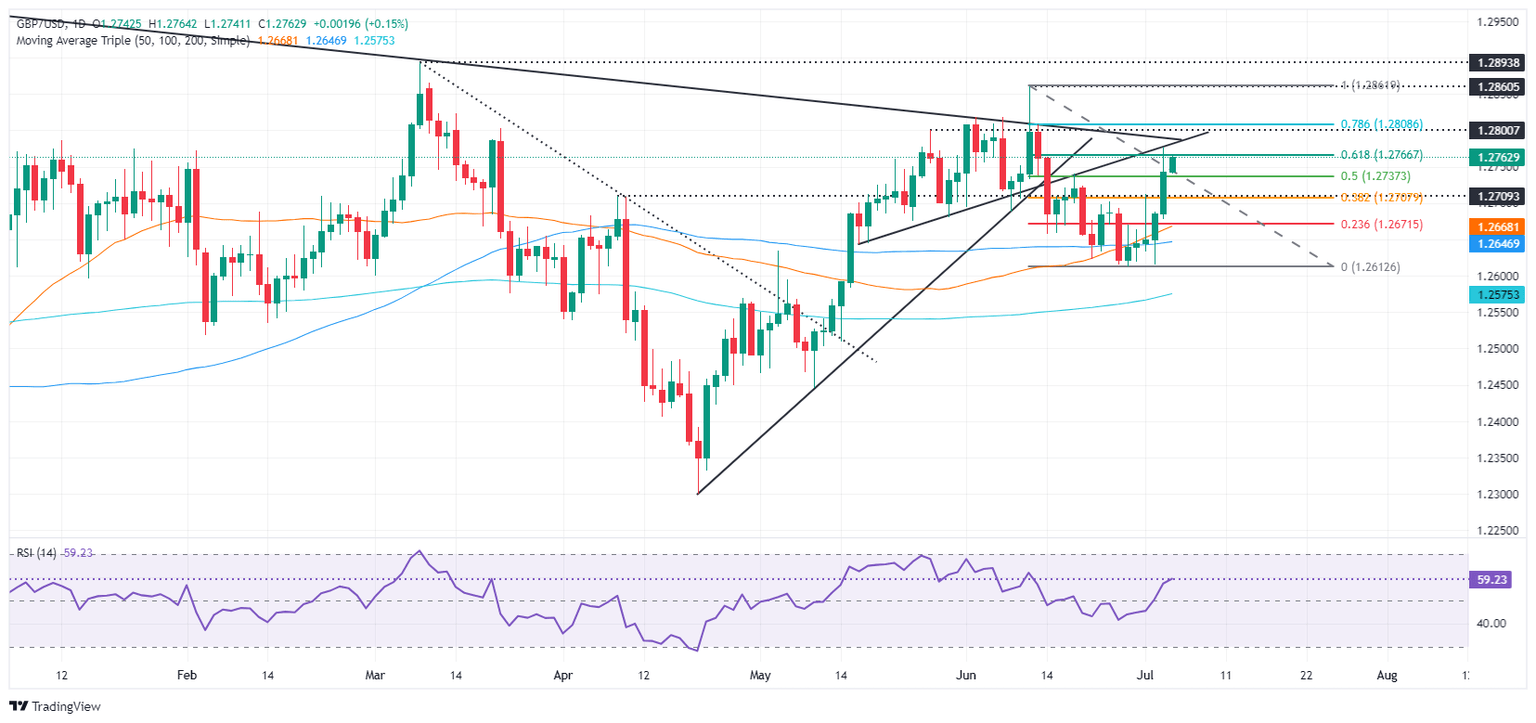GBP/USD Price Analysis: Trends up, faces strong resistance at 1.2770
- GBP/USD rises to 1.2757, up 0.14%, during UK general elections.
- Resistance at 1.2760/77, where 61.8% Fibonacci and trendlines converge.
- If surpassed, next targets: 1.2800 and YTD high at 1.2894.
- Support levels: 1.2736 (50% Fibonacci), 1.2700, 1.2666/70 (23.8% Fibonacci and 50-DMA).

The Pound Sterling rises moderately against the US Dollar on Thursday. The UK holds general elections, which would likely result in a victory for the Labour Party. The GBP/USD trades at 1.2757, up 0.14%.
GBP/USD Price Analysis: Technical outlook
The pair faces a key supply area, composed by the confluence of the 61.8% Fibonacci retracement (Fib) level drawn from the June 12 high to the June 27 last cycle low at around 1.2760 and two resistance trendlines that hover around 1.2760/77. If traders could push the GBP/USD exchange rate past that area, look for a test of 1.2800. a successful breach of the figure can expose the year-to-date (YTD) high of 1.2894.
However, if sellers contain buyers below 1.2760/77, it could weaken the Pound and send the exchange rate toward the 50% Fib at 1.2736. A breach of the latter will expose the 1.2700 figure, followed by the confluence of the 23.8% Fib retracement and the 50-day moving average (DMA) at around 1.2666/70.
GBP/USD Price Action – Daily Chart
Pound Sterling FAQs
The Pound Sterling (GBP) is the oldest currency in the world (886 AD) and the official currency of the United Kingdom. It is the fourth most traded unit for foreign exchange (FX) in the world, accounting for 12% of all transactions, averaging $630 billion a day, according to 2022 data. Its key trading pairs are GBP/USD, aka ‘Cable’, which accounts for 11% of FX, GBP/JPY, or the ‘Dragon’ as it is known by traders (3%), and EUR/GBP (2%). The Pound Sterling is issued by the Bank of England (BoE).
The single most important factor influencing the value of the Pound Sterling is monetary policy decided by the Bank of England. The BoE bases its decisions on whether it has achieved its primary goal of “price stability” – a steady inflation rate of around 2%. Its primary tool for achieving this is the adjustment of interest rates. When inflation is too high, the BoE will try to rein it in by raising interest rates, making it more expensive for people and businesses to access credit. This is generally positive for GBP, as higher interest rates make the UK a more attractive place for global investors to park their money. When inflation falls too low it is a sign economic growth is slowing. In this scenario, the BoE will consider lowering interest rates to cheapen credit so businesses will borrow more to invest in growth-generating projects.
Data releases gauge the health of the economy and can impact the value of the Pound Sterling. Indicators such as GDP, Manufacturing and Services PMIs, and employment can all influence the direction of the GBP. A strong economy is good for Sterling. Not only does it attract more foreign investment but it may encourage the BoE to put up interest rates, which will directly strengthen GBP. Otherwise, if economic data is weak, the Pound Sterling is likely to fall.
Another significant data release for the Pound Sterling is the Trade Balance. This indicator measures the difference between what a country earns from its exports and what it spends on imports over a given period. If a country produces highly sought-after exports, its currency will benefit purely from the extra demand created from foreign buyers seeking to purchase these goods. Therefore, a positive net Trade Balance strengthens a currency and vice versa for a negative balance.
Author

Christian Borjon Valencia
FXStreet
Christian Borjon began his career as a retail trader in 2010, mainly focused on technical analysis and strategies around it. He started as a swing trader, as he used to work in another industry unrelated to the financial markets.


















